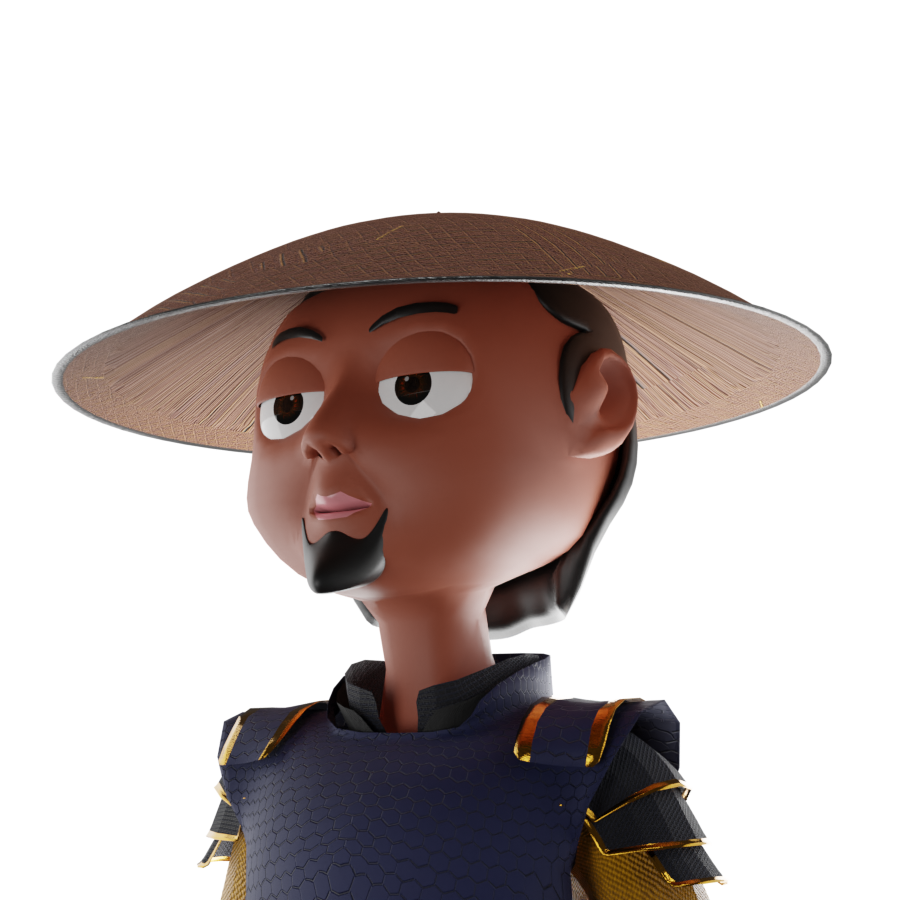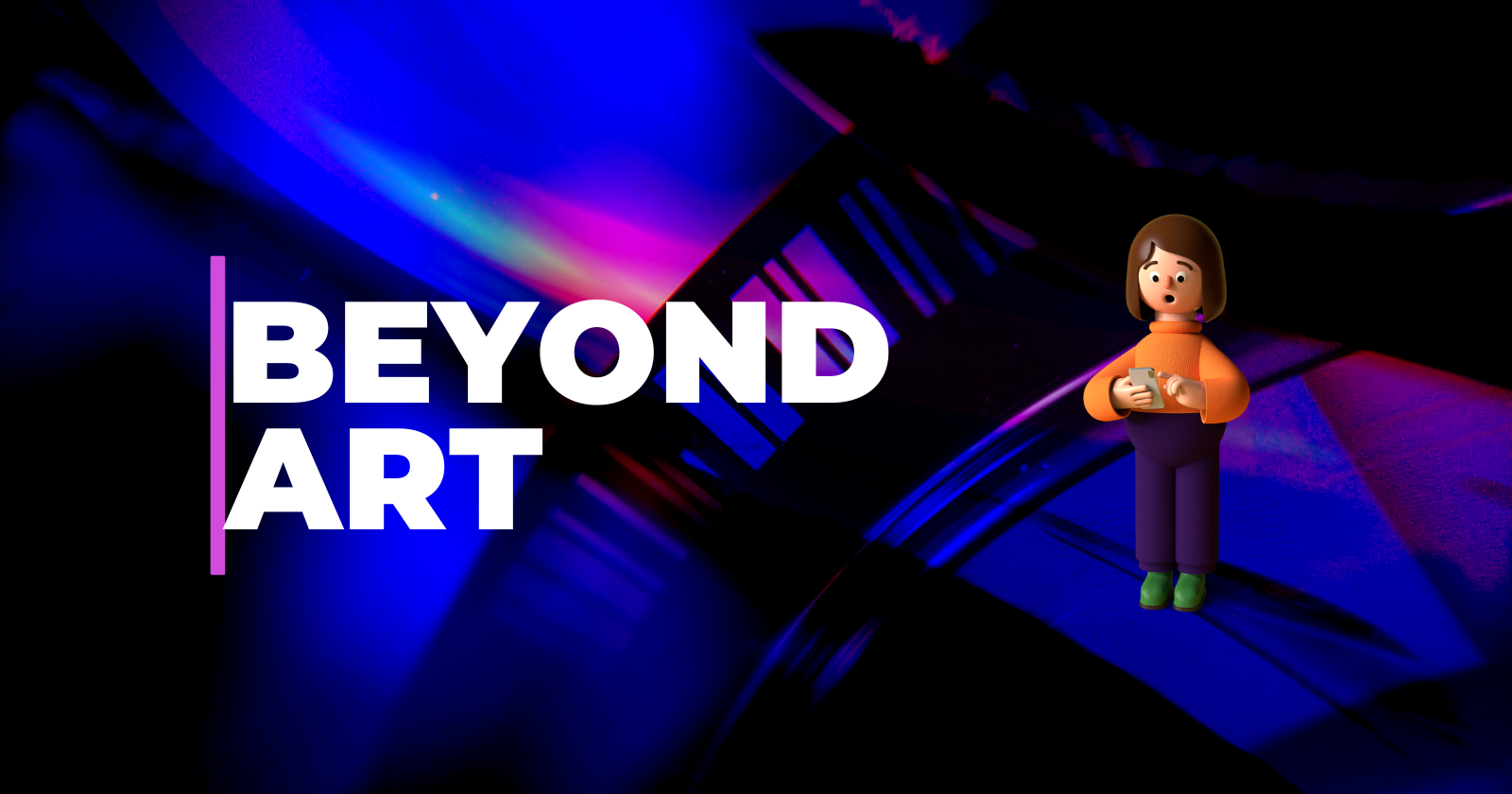Beyond Art: Unveiling the Transformative Power of NFTs
 Ayodele Abraham
Ayodele Abraham
Note: I wrote this some months ago and tried as much as possible to retain its originality as it shows the level of knowledge I had at that time.
Finance and other money-related fields are what come to mind when blockchain is mentioned by many people. As much as blockchain, through smart contracts, is disrupting the world of finance, it is worth noting that there are new and not-yet-discovered applications of blockchain technology. Blockchain appears to be the most disruptive force of innovation in modern history, and one area that has been submerged under its wave is Arts and creativity, popularly known as NFTs.
NFTs have come to change how we treat and value art, assets and properties, forever. NFTs are currently used as collateral for lending and as a representation of physical assets. NFTs are a fundamental part of ‘The Metaverse’.
What are Non-fungible Tokens?
Bugging you with the traded total annual volume of NFTs since 2021 would be a disservice and a total waste of time to you since such information is available all over the internet. We’d rather go to the main point since we want this article simple and short.
If nothing else perfectly shows the uniqueness of humans, then our fingerprint does. No two humans, including a set of twins, have the same thumbprint. Likewise, no two tigers have the same stripe. Nonfungible tokens are in the same similitude. Non-fungible tokens, NFTs for short, are unique digital assets, which might look similar, but with different intrinsic values.
Simply put, NFTs are unique, non-interchangeable digital assets with ownership stored in a blockchain, with the help of smart contracts. Since NFTs live on the blockchain, they can be traded like fungible tokens and coins like Ether, APT, MATIC, etc etc.
While fungibility refers to the ability of a good or asset to be traded with another good or asset, ‘non-fungibility’ is the exact opposite.
Utility
Beyond applications in trading arts and gaming, non-fungible tokens could readily transform variegated industries if well utilized. Non-fungible tokens can be applied in real estate, voting, ticketing, finance, and in many other areas. We will be explaining how NFTs apply to the aforementioned industries and more in our next article.
Art
The Mona Lisa comes to mind when reverence is mentioned as regards artwork. It is inarguably one of the most valued pieces of art in history. It is in the possession of the French government which is determined never to auction or sell it; it is a national property.
Unfortunately, the Mona Lisa had been attacked a few times so if Leonardo da Vinci were to turn in his grave for every time his brainchild had been attacked, this would have happened a minimum of three times. At some point, it was sprayed with red paint, and at another, attacked with a stone, then severely damaged in an acid attack.
Da Vinci’s Mona Lisa isn’t the only artwork that has experienced such vile treatment in the past; Rembrandt’s Night Watch, Cy Twombly’s and Banksy’s art have experienced the same. It should not amaze you that the little butterfly painting in my room was once inadvertently ‘attacked’.
It is most probable artists and curators would have thought of better ways to secure displayed artworks. That is the reason the Japanese government gifted the French government a bulletproof ‘home’ for the Mona Lisa. Well, that might not be necessary in our time. All thanks to NFTs and blockchain technology. It is possible to mint a physical art, and have it displayed as digital art without any fear of theft or attack. Am I saying the era of physical arts is over? Not really, but I can boldly say that perspectives are rapidly changing as regards art curation and ownership.
With the rapid growth of digital arts, we should expect a massive rise in the production and acquisition of digital art display screens in homes and on our streets. The aesthetic needs of the general public should see a massive increase, as NFTs open doors to new possibilities.
Real Estate
Imagine how humans would have missed out on The World, a wonder that currently cruises the Globe, if it had suffered the same fate as MV, Werften’s Global Dream II. It’s expedient we have a little background here.
At the time of this writing, the Global Dream II, a cruise ship, had made its first voyage to the scrapyard. The World, a residential plus hotel cruise ship that voyages the earth continually, has been moving 165 residences amongst crew members for about two decades. The major reason Global Dream II had not fulfilled the builder’s intended purpose was that the manufacturer recently filed for bankruptcy.
How does this relate to Real Estate or NFTs?
The World doubles as a private yacht and luxury vacation residence for many people. Over 260 million United States dollars was invested into the project. Having an opportunity to invest in projects like this entails more than just having the necessary information; One has to be a sophisticated investor. However, with NFTs, an investor, irrespective of background or location, can invest as a fractional property owner; a major criterion for investing is access to information.
Here, the certificate of ownership will be minted as NFTs, and proceeds from rentals or sales are sent back to the NFT holders. I will classify The World as a real estate, a mobile real estate.
Rather than invest in some non-profitable NFT projects, people from any part of the world can have the opportunity to be part of great real estate projects, salvaging the likes of Global Dream II and other buildings across the globe.
Marketplaces can also support trading ‘tokenized’ estates.
Voting
One simple, yet important maxim known all over the world is “Prevention is better than cure”. Even if frauds are not part of an electoral system, it is wisdom to clearly show citizens the entire voting process. While blockchain generally promotes transparency and eliminates ‘trustlessness’, NFTs are more suited for electoral processes since they are specifically made to prove uniqueness.
Ticketing
Fraud has plagued the ticketing industry for years. Many of us, at different times, have been unable to watch our favorite artistes perform life, or see the finals of the UEFA Champions League due to the inflated cost of tickets by third parties. Black marketing of tickets has denied many fans rare opportunities in their lifetime. Nonfungible tokens can solve this challenge amidst other problems like client trust, delayed ticket production and uneven distribution.
Event organizers may decide to mint NFT tickets and make them non-transferable from one wallet to another. This means fans can only purchase directly from the organizers, eliminating middlemen and hoarders who inflate prices for their gains.
Additionally, event organizers may design the NFTs to be easily transferred from one wallet to another aiding trading on Marketplaces like Opensea and Element. I share a common interest with millions, and possibly billions of people across the globe. And what is it? We value sweet memories, and NFT tickets can turn valuable indestructible collectibles acting as perpetual memorabilia.
Finance
We established earlier how NFTs are disrupting the world of Art. It is no news that arts double both as stores of value and objects of aesthetics. Tokenized Arts and real estate can also serve as stores of value.
In traditional finance, loans are usually collateralized with valuables. These valuables could be real estate, valued artwork, businesses and lots more. Imagine a situation you can temporarily give up your collectibles for loans. Well, do not imagine any further as this is already a possibility on Creda. You can collaterize a loan with your valuable NFT.
Gaming
The current style employed in gaming is one in which in-game assets cannot be moved from one game to another. It is also one in which players cannot freely and legally trade their game characters for real money. Simply put, the game developers are in total control of players’ assets. With NFTs, and depending on the build of the game, transferring avatars and characters from one game to another will be a possibility.
With blockchain-based games like Axie Infinity and Illuvium, players can buy characters from supported marketplaces, use them in the games, and keep or decide to trade these characters for fungible tokens at any time. More use cases in the gaming industry will emerge with time.
We will elaborate on each application mentioned in our subsequent writings.
Where can I buy NFTs?
Markets for NFTs are built differently from those for coins and tokens that are fungible. Due to the nature of NFTs, it is expedient that special considerations are put into place while developing such exchange platforms.
Got to go now!
Like every other new technology that has emerged in human history, the blockchain has some downsides that are still being improved upon, and these directly or indirectly affect products and applications tied to it, NFTs inclusive. However, the current solutions proffered by NFTs far outweigh whatever downsides we currently know. Although NFTs are still in the early stages, the technology behind them is rapidly advancing by the day and we would not be surprised to see unprecedented innovations beaming out of this ‘industry’.
Subscribe to my newsletter
Read articles from Ayodele Abraham directly inside your inbox. Subscribe to the newsletter, and don't miss out.
Written by

Ayodele Abraham
Ayodele Abraham
I build interesting stuff on the blockchain. Currently working on axxon.network